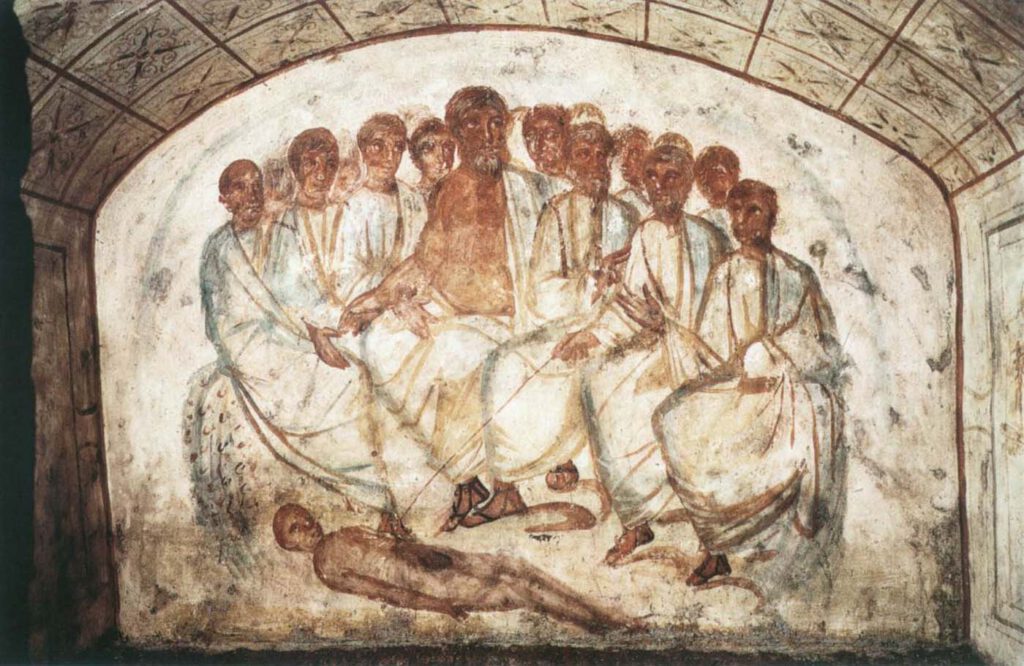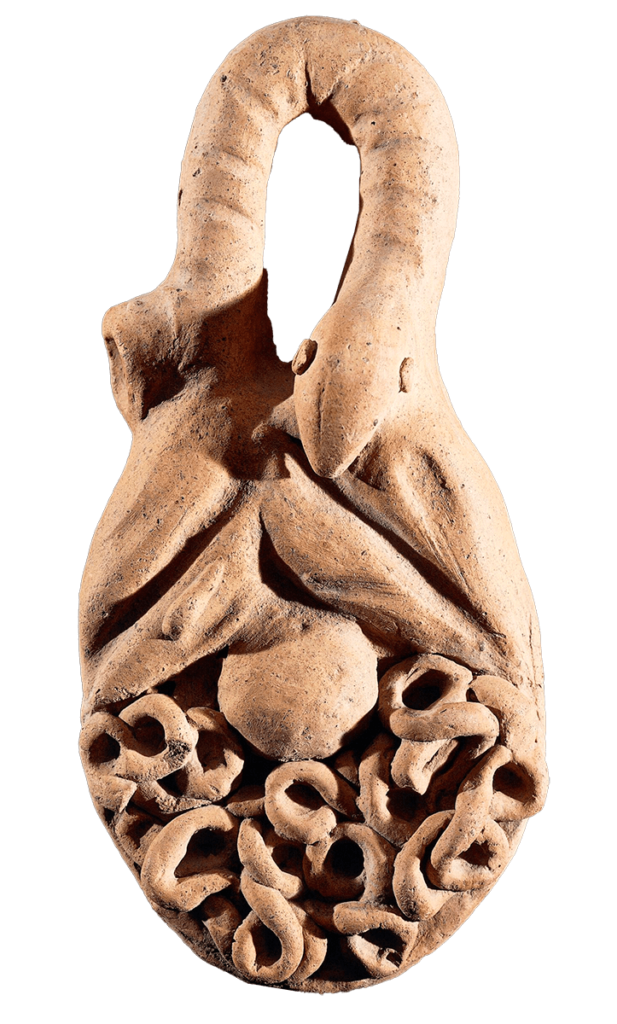A fresco, Catacomba di Via Dino Compagni

A fresco, Catacomba di Via Dino Compagni © foto Pontificia Commissione di Archeologia Sacra” or “© foto Archivio PCAS” [Kontakt zur PCAS in Arbeit] – This fresco from the hypogeum of Via Dino Compagni in the Via Latina Catacomb in Rome dates to the fourth century CE. It shows a large group of men looking […]
A female ‘open torso’ figurine

A female ‘open torso’ figurine Nottingham Castle Museum – This female figurine was discovered at the sanctuary of the Graeco-Roman goddess Artemis/Diana Nemorensis at Lake Nemi in Italy in 1885. It was excavated and recovered from a sacred pit where it had been ritually disposed of sometime in antiquity after it had ceased to be […]
A polyvisceral plaque

A polyvisceral plaque Museo Nazionale Etrusco Di Villa Giulia – This Etruscan polyvisceral plaque from Tessennano in Latium in Italy is thought to date from around 400 BCE. Anatomical votives like these were deposited in sanctuaries and temples as offerings to the gods, generally interpreted as a gesture of gratitude for some manner of divine […]
The ‘Piacenza Liver’

The ‘Piacenza Liver’ Municipale Museum of Piacenza CC0 1.0 Universal (CC0 1.0) – This Etruscan bronze life-size model of a sheep’s liver was discovered in a field near Gossolengo in Piacenza in Italy in 1877 and is thought to date from the late second or early first century BCE. Although its precise purpose is not […]
